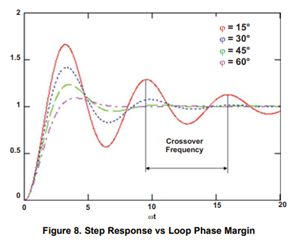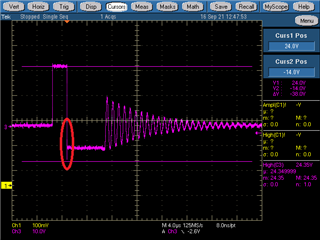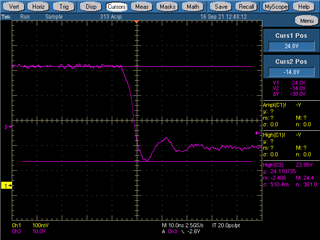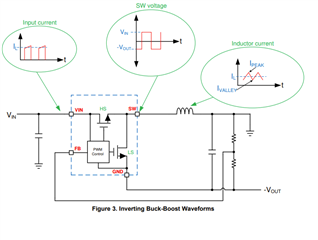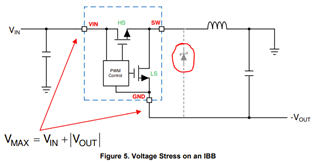Dear *,
we designed in LMR36520ADDA for three different voltage rails 3.3V , 9V, -9V.
Schematic for all three converters:
Efficiency measurements for all three converters:
1) 3.3V, please can you confirm that the scope graphs are as expected?
Vin = from 12V to 24V
Vout = 3.3V
Iout_max = 2A
1a) no load switching point (PFM)

1b) 200mA load switching point (PFM boundary PWM)
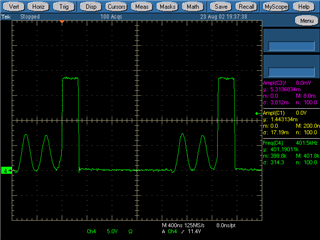
1c) 400mA switching point (PWM)

--------------------------------------------------------------------------------------------
2) 9V, please can you confirm that the scope graphs are as expected?
Vin = from 12V to 24V
Vout = 9V
Iout_max = 1A
2a) no load switching point (PFM)

2b) 140mA load switching point (PFM boundary PWM)

2c) 400mA switching point (PWM)
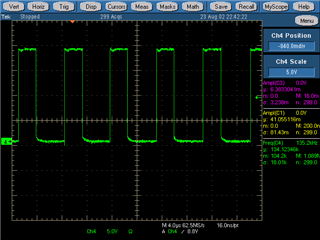
--------------------------------------------------------------------------------------------
3) -9V, Here we have problems
3a) we hear audible noise when Vin is 12V and the load current exceeds 600mA
3b) we have negative spike when Vin is 24V
Vin = from 12V to 24V
Vout = -9V
Iout_max = 1A
3c) no load switching point Vin 12V (PFM)

3d) no load switching point Vin 24V (PFM) -> negative spike

3e) 50mA load switching point Vin 12V (PFM)

3f) 40mA load switching point Vin 24V (PFM) -> negative spike

3g) 200mA load switching point Vin 12V (PWM)

3h) 400mA load switching point Vin 24V (PWM) -> negative spike

3i) 700mA load switching point Vin 12V -> audible noise

3j) 500mA load switching point Vin 12V -> transition to audible noise

--------------------------------------------------------------------------------------------
additional information for audible noise
@ Vin=12 V noise when exceeding 600mA
@ Vin=13 V noise when exceeding 630mA
@ Vin=14 V noise when exceeding 1000mA
--------------------------------------------------------------------------------------------
additional information for negative spiking
when exceeding Vin=19V we start to see negative spiking
--------------------------------------------------------------------------------------------
Best Regards,
David.








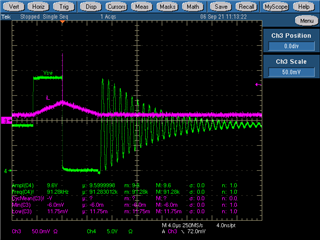
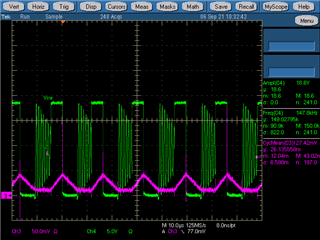

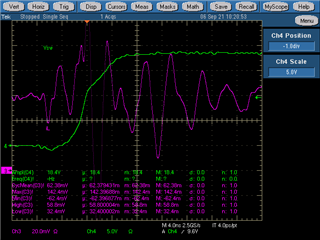
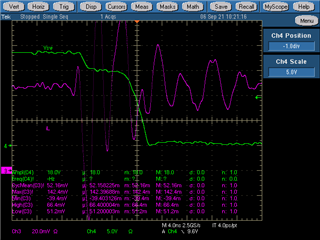
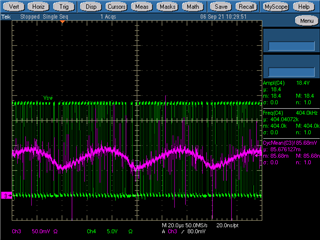
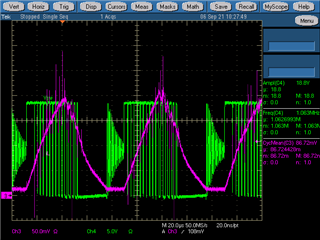
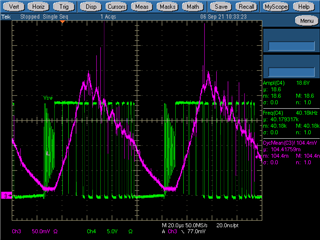

 (Ch1 - V_out transient, Ch2 - Load Voltage transient)
(Ch1 - V_out transient, Ch2 - Load Voltage transient)